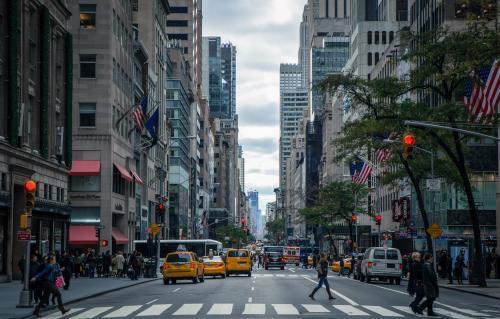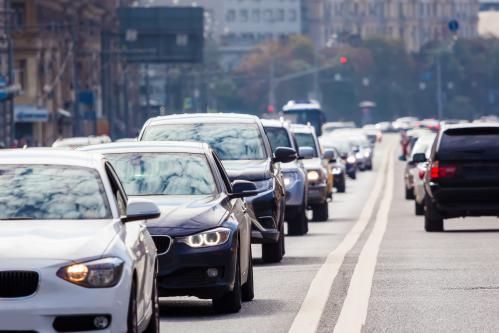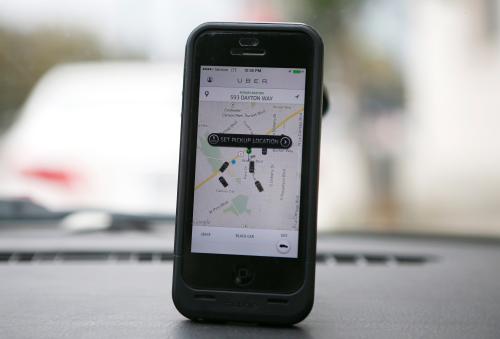Sometimes when a news story hits, you just know it will reverberate. The fatal collision involving an Uber autonomous vehicle (AV) hitting a pedestrian in suburban Phoenix fits that profile perfectly. While all details are not yet public, early reporting suggests the Uber AV hit someone crossing a street outside a designated crosswalk. As an initial response, Uber pulled all of its AV services from each city where it’s testing.
The story spread quickly, as coverage poured in from national newspapers, as well as in-depth stories from tech-focused outlets and continuous threads all over social media. And it’s no wonder. There are so many sensitive news items rolled into this one event—automated technology, legal gray zones, “cars versus people” tribes—that those who support and those who fear driverless technology each can use the news itself to advance their beliefs.
Yet beyond the personal tragedy, the events in Phoenix do nothing to change the broader context that existed the day before the collision happened: American roads are deeply unsafe, transformative technology is coming whether we like it or not, and the public must now enter a complex but essential debate about how we should integrate AV technology within the places where we live, work, and play.
Any unnecessary death is a tragedy, but the collision in Phoenix was far from the only death on our streets that day. Over 100 people die in automobile-related crashes each day in America. In fact, there were 10 pedestrian deaths alone in the Phoenix area last week. Most years, these crashes represent the leading cause of death for people in their teens and twenties. It’s appalling and a steep price to pay for our car-dependent geography. And since most of us drive every day, it’s a tangible risk we all take.
The promise of AV technology is to virtually eliminate this self-created scourge. The thinking is sound: when every car can communicate with each other, and when machine-learning algorithms can capture the enormous range of interactions between vehicles and non-motorists, then we can manufacture vehicles that both get us where we need to go and ensure almost no one gets hurt in the process.
Until the tragic event in Phoenix, that dream scenario of no true AV-related fatalities still felt possible. Besides a few minor nicks—nearly all of which were the fault of human drivers—Waymo, Ford, GM, Uber, and other companies working on AVs all achieved sterling safety records. But dream is the operative word, because perfect safety was never possible.
The reality is that we’re still in the nascent stages of this new technology and streets are inherently dangerous places. There is no established algorithm for all scenarios. The testing companies don’t share their code, nor is reporting consistent from state-to-state. And we’re just now seeing AVs enter the more chaotic world of cities. It’s one thing to automate driving on a well-striped, high-quality, cars-only road. But machine learning is harder when you add “unpredictable” people, poorly striped lanes, low quality pavement, inclement weather, and other inconsistencies. Algorithms thrive on order—and city streets have less of it.
When every car can communicate with each other, and when machine-learning algorithms can capture the enormous range of interactions between vehicles and non-motorists, then we can manufacture vehicles that both get us where we need to go and ensure almost no one gets hurt in the process.
Understandably, the public will respond to this new piece of information by debating the very existence of this new technology. There certainly will be calls to stop all AV testing, not just Uber’s program. The furor could slow down other cities and states from authorizing testing, much like it could influence federal legislators to redraft portions of their AV legislation. But technological progress is hard to stop, and I don’t expect it to happen in this case. AVs simply offer too many transportation benefits—greater long-run safety, hands-free travel, subscription-based models, new public revenue streams—and there is too much private investment already underway to keep them at bay.
Instead, the truly challenging debate—the one that will last—will involve where to permit AVs to drive and how we reform other transportation and design laws in the process. It’s not hyperbole to say every single rule and penalty related to transportation and street design could be upended within the next few decades. Sound fantastical? It already happened once within our grandparents’ lifetimes.
The introduction of affordable automobiles in the early twentieth century led to a safety and efficiency crisis on our city and early suburban streets. Vehicle fatalities jumped from non-existent to over 10,000 in a short period. In response, a genuine, long-term fight ensued over where to put pedestrians and vehicles within the shared right-of-way. Peter Norton has a great book detailing this history, but the key result is that the car was the big winner. New laws restricted pedestrians to only walk on sidewalks and cross at designated places. And while vehicles had to be registered to use the streets and drivers licensed, speed limits rose significantly, including on new kinds of streets designed explicitly for higher speeds.
We did eventually get pedestrian fatalities to trend downwards, but the unintended consequences now surround us. City-based street grids gave ways to hierarchies of fast-moving arterials and essentially walled-off residential streets. Sidewalks are no longer a given. Bountiful parking is expected. The closest commerce is often a strip mall. And while we didn’t outlaw pedestrians, most places outside dense cities and suburbs are so inhospitable to walking or biking that the design does the outlawing for us.
These unintended consequences are the direct result of transportation designs not governed by more overarching principles. Sure, the transportation priorities were clear: separate uses to manage the tension between demand for higher vehicle speeds and threats to human safety. But transportation is a means, not an end. And by ignoring the ends—building places that promote opportunity for all, are aesthetically pleasing, and steward environmental health—we’re now surrounded by a daily “place” experience that few would draw up from scratch.
We cannot make that mistake again.
AV technology gives us a chance for a do-over. Our shared challenge, then, is to ensure AV technology works for us and not the other way around. First, that means local governments who control land use and their county and state partners who control many high-speed streets must figure out new ways to collaborate on purposeful place-based design. Second, specific land use and transportation decisions must formally relate back to those broader objectives. Finally, we must be ready to scrap every regulation we know related to vehicles and pedestrians. It’s that big.
AV technology gives us a chance for a do-over. Our shared challenge, then, is to ensure AV technology works for us and not the other way around.
Take for example the Phoenix event. Should future pedestrians have to cross streets in designated places? Do we further separate uses, making AV-permitted streets and pedestrian-only routes? Do we intermingle and make vehicles always stop for pedestrians, everywhere, every time? Do we create new tiers of speed limits for vehicles? And how should pedestrian regulations differ by neighborhood density, especially when comparing central business districts to suburbs?
This is just a sampling of questions. It’s not even touching issues around parking, pricing, or zoning, to name just a few complex policy areas. Again: every single regulation is now up for debate. We’re confronting an enormous amount of work, and it will keep many of us busy for our entire career.
The positive news is we still have time. It took decades to settle on the place and road designs we know today. And design standards are living documents, even if they can feel insurmountable for those leading reform efforts. Take bike lane designs: some cities consistently test and implement new designs, while some places still functionally outlaw them. It will be the same here as everything from national street design guidelines, building codes, best practice networks, personnel training, and even computer software must undergo redesigns to consider the newest technologies and hard-wire new long-term objectives.
The tragedy in Phoenix was ultimately inevitable, as the onset of AV’s groundbreaking technology revolution would lead to an unpredictable tragedy at some point. And while the hope is AV performance will soon point to a safer future, let’s make sure we use this specific tragedy to spark even broader long-term good.







Commentary
What Uber’s autonomous vehicle fatality tells us about the future of place
March 20, 2018